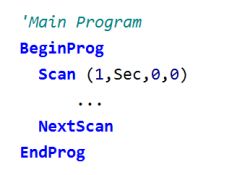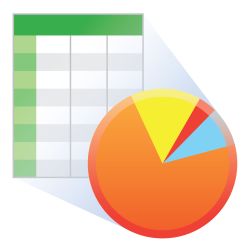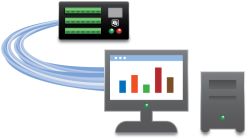This product is not available for new orders. We recommend ordering: CR350.

| Services Available | |
|---|---|
| Repair | Yes |
| Calibration | Yes |
| Free Support | Yes |
Overview
The CR800 is a smaller, research-grade data logger designed for stand-alone operation in harsh, remote environments. It is intended for smaller configurations in which fewer sensors will be measured. Each CR800 reads input from sensors, then transmits the data via a communication peripheral; most sensors and telecommunication devices are compatible. Multiple CR800s can be configured as a network or units can be deployed individually.
Another data logger, the CR850, is similar to the CR800, but it has an integrated keyboard and display screen for on-site control.
Read MoreBenefits and Features
- Ideal applications include wind profiling, weather stations, ETo/agriculture, air quality, soil moisture, water level/stage, aquaculture, vehicle testing, Time Domain Reflectometry, SCADA, and water quality
- Simpler in design, the CR800 and CR850 are easier to program and wire.
- Serial communications with serial sensors and devices supported via I/O port pairs
- Contains custom ASIC chip that expands pulse count, control port, and serial communications capabilities
- Compatible with channel expansion peripherals allowing you to expand your system
- Supports PakBus, Modbus, SDI-12, and DNP3 protocols
- Includes both an CS I/O port and an RS-232 port for connecting communication devices
- Gas Discharge Tube (GDT) protected inputs
- Battery-backed clock that ensures accurate time is maintained while data logger is disconnected from battery power
- Program with LoggerNet, PC400, or Short Cut to fit your setup
This product is available for repair and calibration
Images










Detailed Description
The CR800 consists of measurement electronics encased in a plastic shell and an integrated wiring panel. This data logger uses an external keyboard/display and power supply. Low power consumption allows the CR800 to operate for extended periods on a battery recharged with a solar panel—eliminating the need for AC power. The CR800 suspends execution when primary power drops below 9.6 V, reducing the possibility of inaccurate measurements.
The on-board operating system includes measurement, processing, and output instructions for programming the data logger. The programming language, CRBasic, uses a BASIC-like syntax. Measurement instructions specific to bridge configurations, voltage outputs, thermocouples, and pulse/frequency signals are included. Processing instructions support algebraic, statistical, and transcendental functions for on-site processing. Output instructions process data over time and control external devices.
Compatibility
Please note: The following shows notable compatibility information. It is not a comprehensive list of all compatible products.
Software
| Compatible | Note | |
|---|---|---|
| LoggerNet | (Version 3.3 or higher) | |
| PC200W (retired) | ||
| PC400 | (Version 1.4 or higher) | |
| PCONNECT (retired) | (Version 3.3 or higher) | |
| PCONNECTCE (retired) | (Version 2.2 or higher) | |
| RTDAQ | ||
| Short Cut |
Additional Compatibility Information
Sensors
With several channel types, the CR800 is compatible with nearly every available sensor, including thermocouples, SDI-12 sensors, and 4 to 20 mA sensors. A custom ASIC chip expands its pulse count, control port, and serial communications capabilities. The CR800's I/O ports can be paired as transmit and receive, allowing serial communications with serial sensors and devices.
Measurement and Control Peripherals
The CR800 is compatible with all of our CDMs (requires an SC-CPI), SDMs, multiplexers, vibrating-wire interfaces, terminal input modules, and relays.
Communications
The CR800 communicates with a PC via direct connect, NL201 Ethernet Interface, multidrop modems, phone modems (land line, digital cellular, and voice-synthesized), RF telemetry, and satellite transmitters (Argos, Iridium, and Inmarsat.
Data can be viewed on the CR1000KD Keyboard Display, CD100 Mountable Display with Keypad, user-supplied iOS or Android device (requires LoggerLink), CD295 DataView II Display, or a user-supplied PDA (PConnect or PConnectCE software required).
The SC115 is the only compatible external data storage device. The CR800 does not have a peripheral port and is therefore not compatible with the CFM100, NL115, or NL120.
Enclosures
The CR800 and its power supply can be housed in any of our standard enclosures.
Power
Any 12 Vdc source can power the CR800 datalogger. Power supplies commonly used with the CR800 are the BPALK, PS150, and PS200. The BPALK provides eight non-rechargeable D-cell alkaline batteries with a 7.5 A h rating at 20°C.
Both the PS150 and PS200 consist of a sealed rechargeable 7 A h battery and a charging regulator. Their battery should be connected to a charging source (either a wall charger or solar panel). These two power supplies differ in their charging regulator. The PS150 has a standard regulator and the PS200 has a micro-controller-based smart regulator. The PS200's regulator provides two-step constant voltage charging and temperature compensation that optimize battery charging and increases the battery’s life.
Also available are the BP12 and BP24 battery packs, which provide nominal ratings of 12 and 24 A h, respectively. These batteries should be connected to a regulated charging source (e.g., a CH100 or CH200 connected to a unregulated solar panel or wall charger).
Software
CRBasic, the CR800's full programming language, supports simple or complex programming and many onboard data reduction processes.
Specifications
| -NOTE- | Note: Additional specifications are listed in the CR800-Series Specifications Sheet. |
| Operating Temperature Range |
|
| Maximum Scan Rate | 100 Hz |
| Analog Inputs | 6 single-ended or 3 differential (individually configured) |
| Pulse Counters | 2 |
| Voltage Excitation Terminals | 2 (VX1, VX2) |
| Communications Ports |
|
| Switched 12 Volt | 1 terminal |
| Digital I/O |
|
| Input Limits | ±5 V |
| Analog Voltage Accuracy | ±(0.06% of reading + offset) at 0° to 40°C |
| ADC | 13-bit |
| Power Requirements | 9.6 to 16 Vdc |
| Real-Time Clock Accuracy | ±3 min. per year (Correction via GPS optional.) |
| Internet Protocols | FTP, HTTP, XML POP3, SMTP, Telnet, NTCIP, NTP |
| Communication Protocols | PakBus, Modbus, DNP3, SDI-12, SDM |
| Idle Current Drain, Average | 0.7 mA (@ 12 Vdc) |
| Active Current Drain, Average |
|
| Dimensions | 24.1 x 10.4 x 5.1 cm (9.5 x 4.1 x 2 in.) |
| Weight | 0.7 kg (1.5 lb) |
Related Documents
Product Brochures
Technical Papers
- Benefits of Input Reversal and Excitation Reversal for Voltage Measurements
- Preventing and Attacking Measurement Noise Problems
- FTP Streaming
- Voltage Measurement Accuracy, Self-Calibration, and Ratiometric Measurements
- BACnet to Modbus Protocol Conversion (App. Note: 1M-C)
- DNP3 with Campbell Scientific Dataloggers
- Serial Sensors: Interfacing with CSI Dataloggers (App. Note Code: 2MI-V)
- Modbus Troubleshooting Guide
Case Studies
Miscellaneous
Videos & Tutorials
Downloads
CR800 OS v.32.07 (4.41 MB) 15-05-2024
Execution of this download installs the CR800 Operating System and Compiler on your computer. It also updates the CR800 support files for the CRBasic Editor.
Note: This OS has crossed the 2 Meg CR800 size limit for remote download. The OS must be downloaded to the 2 Meg CR800 via direct connect with the Device Configuration Utility. All OS download methods are supported by the 4 Meg CR800.
Upgrading from versions prior to version 28 of the Operating System will reset the datalogger’s CPU drive. This is due to a change in the format of the file system from FAT16 to FAT32. In order for the datalogger to operate correctly, as part of the upgrade, the CPU drive is formatted to FAT32. Any programs stored and running from the CPU drive will be lost. It is not recommended to update the datalogger’s Operating System over a remote connection where program control regulates the communication equipment (turning it on or off, etc.). In these cases, an on-site visit and a backup using DevConfig’s backup utility is necessary to update the datalogger’s Operating System.
Watch the Video Tutorial: Sending an OS to a Local Datalogger.
In all cases where the datalogger is being updated from an Operating System prior to 28, the use of DevConfig’s backup utility is recommended due to the CPU drive being formatted using the new FAT32 format.
Device Configuration Utility v.2.33 (49.6 MB) 07-07-2025
A software utility used to download operating systems and set up Campbell Scientific hardware. Also will update PakBus Graph and the Network Planner if they have been installed previously by another Campbell Scientific software package.
Supported Operating Systems:
Windows 11 or 10 (Both 32 and 64 bit)
Articles and Press Releases
Newsletter Articles
- Case Study: Rain Forest Turbidity in Panama 28-10-2016
- Case Study: Hydro-SCADA System in Northern California 18-04-2016
- Case Study: Houston Transitions to ALERT2 18-04-2016
- Case Study: Geothermal Development in Colombia 02-02-2016
- Powerful New Operating System for CR800, CR1000, CR3000 04-02-2015
- New Operating System for CR800, CR1000, CR3000 17-08-2012
FAQs for
Number of FAQs related to CR800: 144
Expand AllCollapse All
-
The 5 V terminal is regulated and remains near 5 Vdc (±4%) as long as the CR800 supply voltage remains above 9.6 Vdc. Measurement of the output from 5 V (by means of jumpering to an analog input on the same CR800) enables an accurate bridge measurement if the 5 V terminal must be used for excitation.
-
No. The setup is identical.
-
The CPU of the data logger can be removed and mated with a different CR800 wiring panel. This can be done by removing the four corner nuts on the underside of the CR800. Do not loosen the two middle nuts. Be careful not to damage the pins mating the CPU with the wiring panel.
-
Yes. For instructions, refer to the operator’s manual.
-
Calibration is recommended every two years.
-
Yes, unless the CR1000 program contains measurement instructions for channels not available on the CR800 or CR850.
-
Yes. EX and VX are synonymous and refer to voltage excitation.
-
No, unless the internal lithium battery is below 2.7 Vdc. The lithium battery helps preserve the data, program, and clock setting when the 12 Vdc battery is removed.
-
The lithium battery should be replaced when the voltage drops to 2.7 Vdc or below. The data logger will continue to function normally when connected to a 12 Vdc source even if the lithium battery is below 2.7 Vdc; however, after the 12 Vdc source is removed from the data logger, there is a risk of losing data, the program, and the clock setting.






























